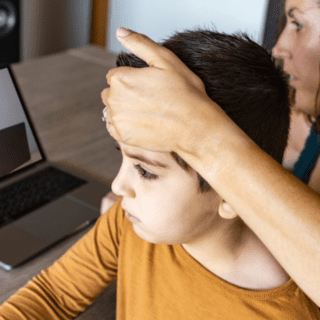
For elderly patients, remote patient monitoring apps can be a great source of help. Remote patient monitoring is a technology that allows healthcare organizations to monitor the health status of patients remotely through wireless sensors in their homes. Much has been written about how remote patient monitoring will revolutionize healthcare, but many people don’t know how these applications can really help the elderly and even save lives.
Remote monitoring apps significantly reduce the risk of human error and save on healthcare costs.
In addition to offering convenience and ease, remote patient monitoring apps also allow elderly patients to stay at home instead of needing to travel potentially long distances to get medical attention. This makes it easier for them because they won’t have to worry about missing work or spending money on public transportation when they need medical care at an emergency room or hospital setting. This could save them hundreds if not thousands depending on where they live!
RPM apps help healthcare organizations collect, analyze and monitor the health of elderly individuals via their smartphones or tablets. The system can detect subtle changes in their health status, such as heart rate variability (HRV), blood pressure, body fat, oxygen saturation level, etc., which can help them plan treatments accordingly.
Remote patient monitoring apps help detect subtle changes in a patient’s health. They see changes in body temperature and heart rate, which can be used to determine if a patient has any notable changes to their health. This can help prevent serious health issues since it allows doctors to monitor your elderly loved ones regularly and set up prompt responses if anything seems off. The app also allows you to set up alerts if something goes wrong or someone needs medical attention quickly.
Remote patient monitoring apps make it easier for caregivers caring for an elderly relative by providing information such as medication schedules and other essential details. How they’re doing each day so they can take better care of themselves while still seeing what needs tending within their own homes without having anyone else interfere unnecessarily.”
With this technology, elderly patients can be monitored remotely through their phone or tablet without having to visit a hospital or clinic. This allows for early intervention so that they can get quick treatment for their symptoms and avoid expensive hospitalization costs. Additionally, it helps reduce healthcare costs since there is no need for doctors’ visits or prescriptions from pharmacies when someone has only been admitted due to an illness.
Remote patient monitoring apps allow families to stay connected with their loved ones via smartphone applications. The patient can be monitored from anywhere worldwide. It reduces the time caregivers spend on tasks like bathing and dressing that may not be necessary anymore if they have a remote patient monitor system installed at home.
It also allows patients to receive critical information about their health status, including blood pressure and heart rate readings via an app on their smartphone or tablet.
A remote patient monitoring system is a great way to reduce the burden on hospitals, which means more time for doctors to focus on treating patients. It also helps prevent hospital-acquired infections and other complications associated with hospitalization.
Furthermore, elderly patients can be monitored at home as long as they have access to technology that allows them to log into an app from anywhere in the world. This is especially advantageous for those who live alone and may not have family members nearby who could help them with such tasks as bathing or using the bathroom—or even just checking up on them when something goes wrong.
A recent study showed that elderly patients who received remote monitoring could spend fewer days in the hospital than those who didn’t use RPM apps. Most studies show that these programs save money because they allow care providers time spent traveling between multiple locations instead of being stuck doing paperwork while sitting behind a desk all day.
Remote patient monitoring is a terrific way to help elderly patients monitor their health, activities, and medications. It also helps monitor elderly patients’ diet, sleeping patterns, and other factors affecting their overall well-being. Remote patient monitoring apps are usually used by caregivers or family members who want to stay informed about how their loved ones are doing day-to-day. These applications provide an easy way for them to do this by providing accurate information about the condition of their loved one being monitored through smart devices such as smartphones or tablets.
Remote patient monitoring apps can help elderly patients in many ways. They provide detailed and precise patient data, allowing healthcare organizations to detect subtle changes in health and act accordingly. Remote patient monitoring apps are also helpful for families who want to stay connected with their loved ones via smartphone applications.
Become a Partner
Support
Portals